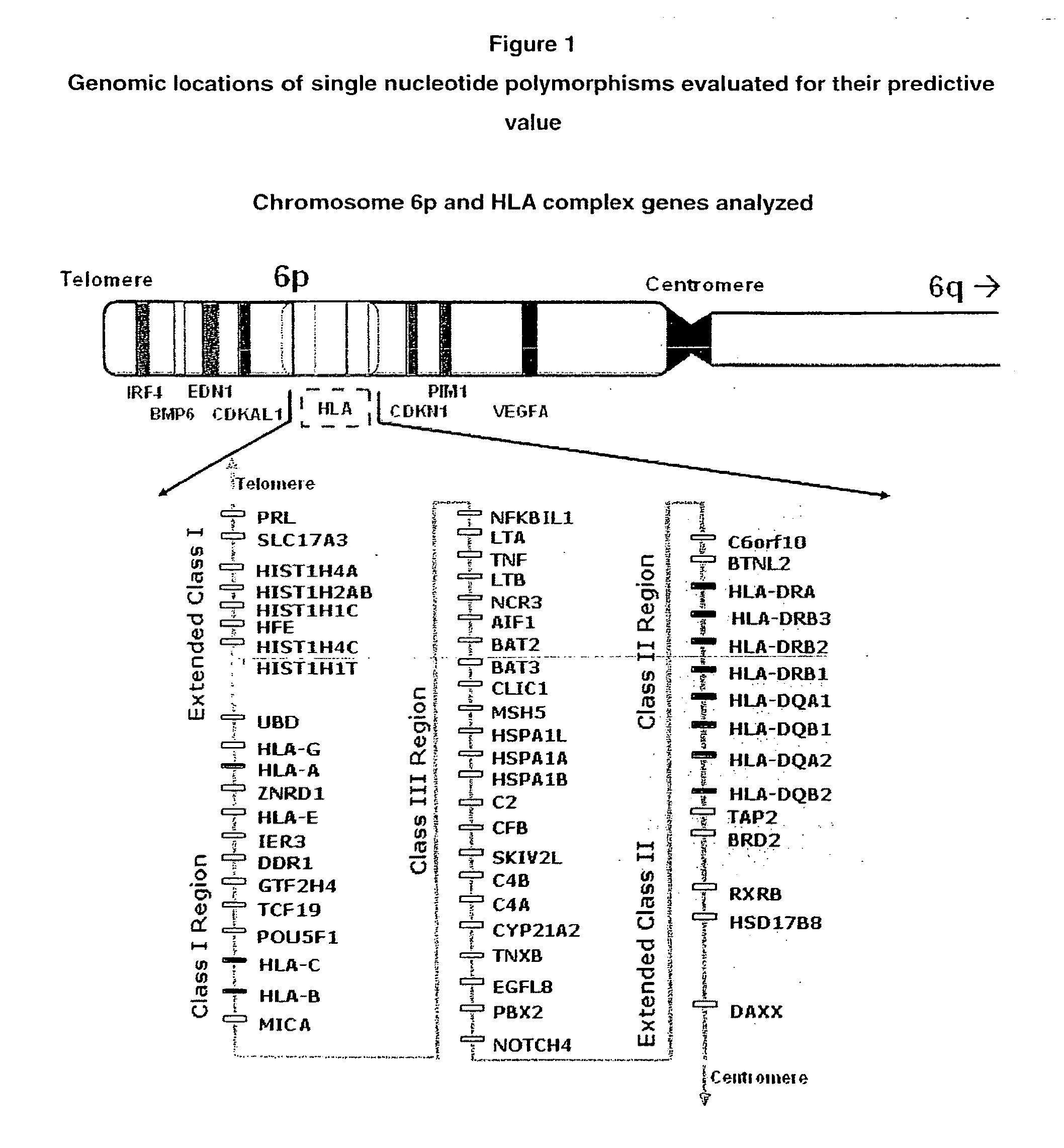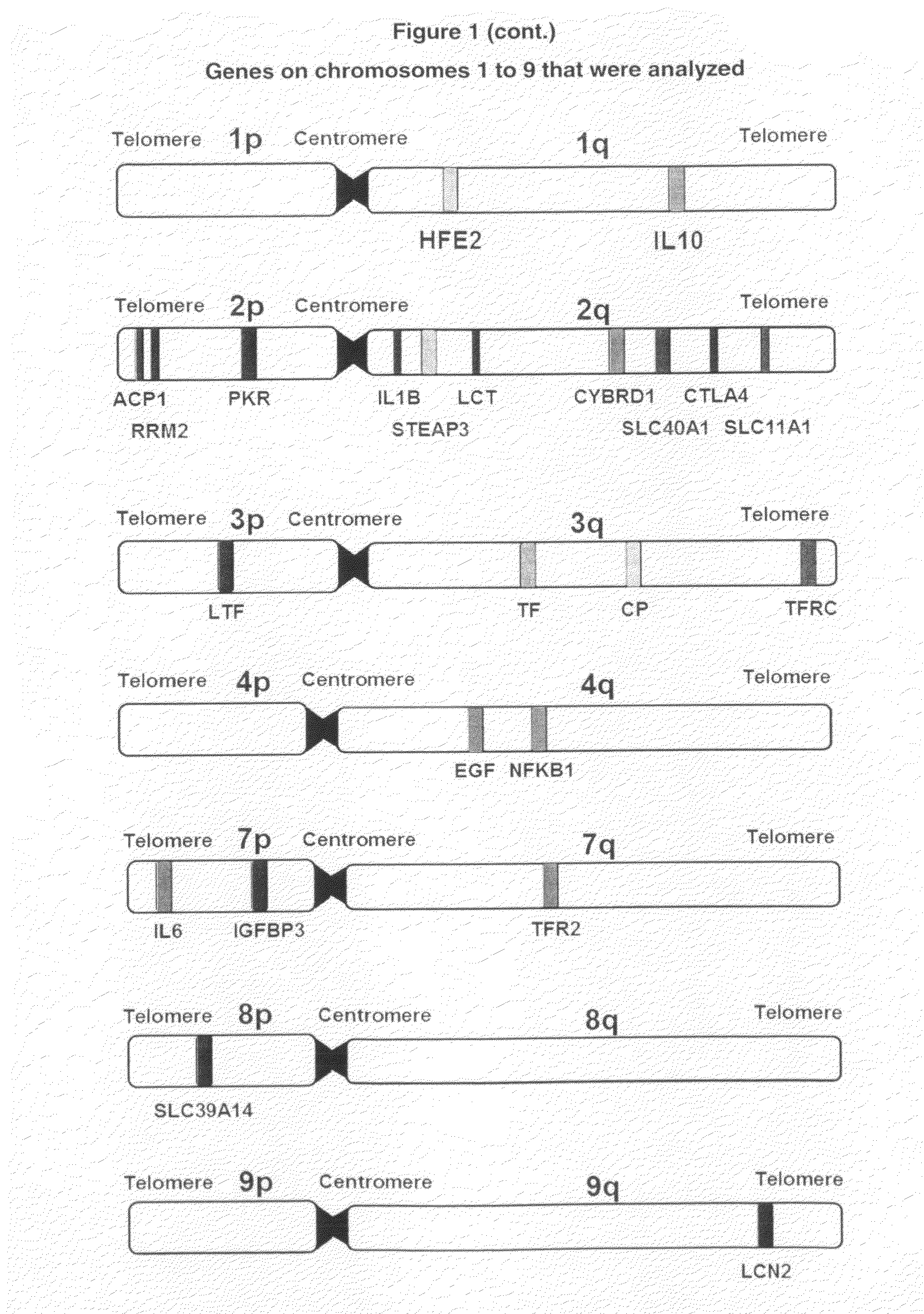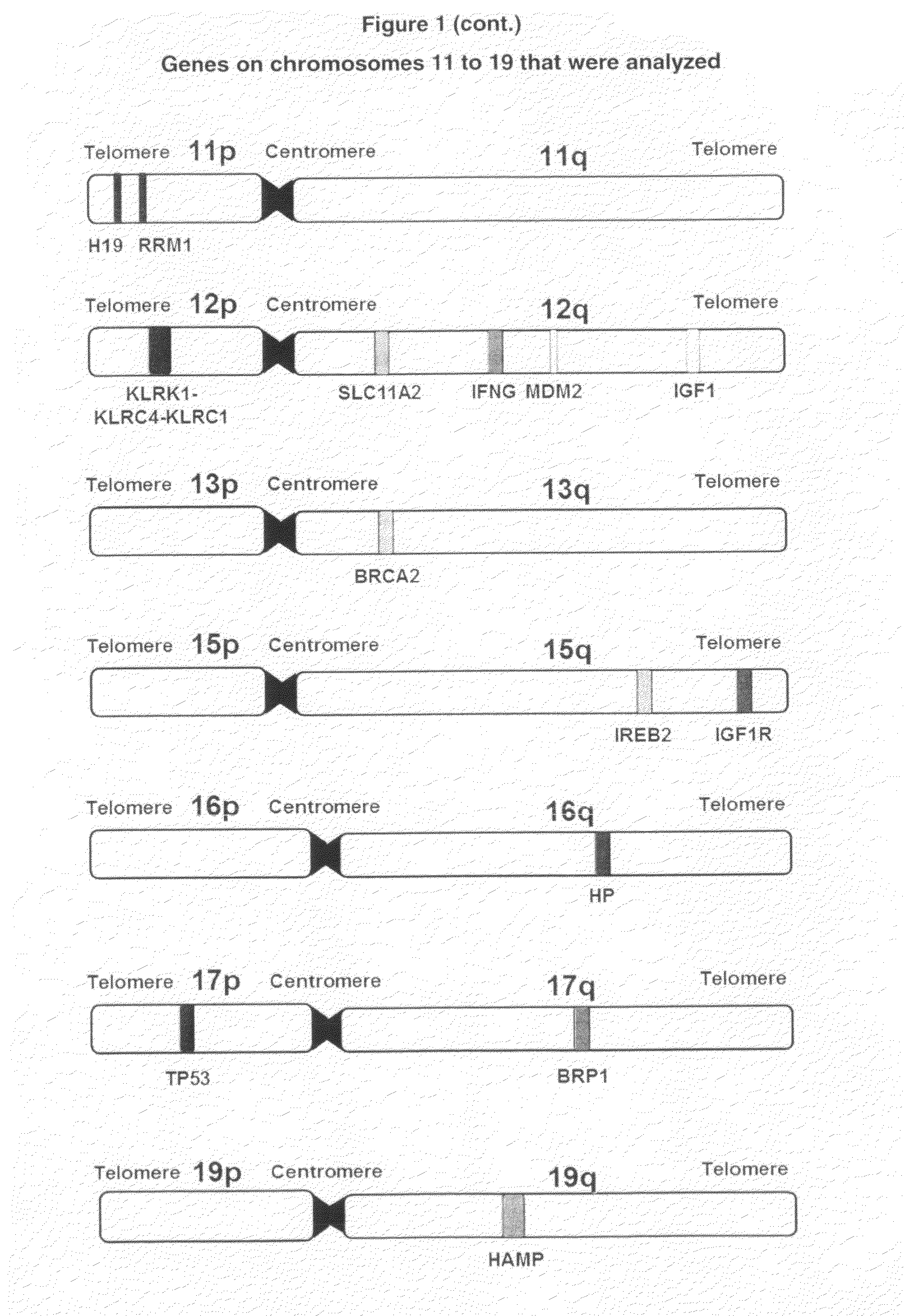Single nucleotide polymorphisms as genetic markers for childhood leukemia
a single nucleotide polymorphism and childhood leukemia technology, applied in the field of single nucleotide polymorphisms as genetic markers for childhood leukemia, can solve the problems of inability to identify reliable risk markers in initial studies in humans, and low reliability of serological hla typing methods, so as to reduce increase the risk of childhood leukemia
- Summary
- Abstract
- Description
- Claims
- Application Information
AI Technical Summary
Benefits of technology
Problems solved by technology
Method used
Image
Examples
example 1
Characteristics of Patient and Control Samples
[0147]We used patient and control sample set to seek childhood leukemia associations in the various genes (e.g., HLA complex). This sample set contains 114 cases with childhood ALL (<15 year-old) and 388 newborn controls from South Wales, U.K. The childhood ALL cases were consecutively diagnosed from 1988 to 1999 in South Wales (U.K.). The use of a newborn control group allows estimation of the leukemia risk for a newborn.
[0148]The control sample set consists of 388 cord blood samples from 201 girls and 187 boys. The cord blood samples from newborns or peripheral blood samples from leukemia cases were collected in EDTA-containing tubes. White blood cells were isolated using standard protocols. DNA was extracted from white blood cells using standard phenol-chloroform extraction method or equivalent methods. DNA samples were re-suspended in double distilled H2O at 100 nanograms per microliter (ng / mL) and kept frozen at −20° C. until used f...
example 2
Selection of Genes for Testing their Role in Childhood Leukemia Development
[0151]To the best of the present inventors' knowledge, despite few published reports including those by the inventor cited elsewhere in this application and by others (See, for example, Shannon K, 1998; Canalle et al, 2004; Sinnett et al, 2006; Chokkalingam & Buffler, 2008), there are no genetic polymorphisms for prediction of childhood leukemia risk in clinical use. This is partly due to very low predictive value provided by individual markers. When combined, however, the cumulative or additive predictive may sum up to remarkable values. The present application demonstrates the feasibility of this approach that has not been tried in childhood leukemia before.
[0152]The present inventors used recently emerged information on the genomic polymorphisms in genes likely involved in childhood leukemia development. We recognized the sex-specific differences in risk to develop childhood leukemia. Because males and fem...
example 3
Genotypings of Single Nucleotide Polymorphisms
[0156]We achieved genotyping of SNPs using a variety of methods. We found that they consistently provide equivalent results. The choice was based on availability of the necessary instruments and expertise, budget available for the study and convenience. Our choice of method was TaqMan allelic discrimination assay for SNP genotyping. All TaqMan assays were purchased from ABI (ABI, Foster City, Calif.).
[0157]When TaqMan allelic discrimination assay was not possible to use, we chose an alternative method. This happened for HLA-DRA rs3135388, HLA-DQA1 rs1142316, HLA-G rs1704, HSPA1B rs1061581, MICA rs1051792 and HMOX1 rs5755709. For these polymorphisms, we used a PCR based restriction fragment length polymorphism assay. The details of these methods used to genotype polymorphisms within our candidate genes are provided in the detailed experimental procedures section.
[0158]Table 2 shows the 73 SNPs either showed an individual difference in gen...
PUM
| Property | Measurement | Unit |
|---|---|---|
| TM | aaaaa | aaaaa |
| TM | aaaaa | aaaaa |
| TM | aaaaa | aaaaa |
Abstract
Description
Claims
Application Information
 Login to View More
Login to View More - R&D
- Intellectual Property
- Life Sciences
- Materials
- Tech Scout
- Unparalleled Data Quality
- Higher Quality Content
- 60% Fewer Hallucinations
Browse by: Latest US Patents, China's latest patents, Technical Efficacy Thesaurus, Application Domain, Technology Topic, Popular Technical Reports.
© 2025 PatSnap. All rights reserved.Legal|Privacy policy|Modern Slavery Act Transparency Statement|Sitemap|About US| Contact US: help@patsnap.com



